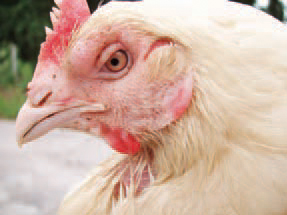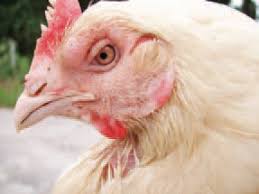In this article, we are going to be looking at ways to avoid fowl cholera diseases in our poultry farms, the preventive measures, and also the treatment in case we come across this fowl cholera in our poultry farm or other poultry farm near me/you because this is a disease or sickness that when it affects our birds, it can easily lead to the loss of their lives (death).
According to research, it can be also called avian cholera, avian hemorrhagic septicemia, and avian pasteurellosis.
Fowl cholera can be seen as a bacteria disease in fowls, turkeys, and any other bird.
This disease can cause acute mortality and chronic suppurative necrosis.
It is a contagious bacterial disease that can affect domestic and wild birds.
It normally happens as septicemia of sudden onset with very high morbidity and mortality.
This disease that tends to afflict birds (chicken) often results in significant production losses. These fowl cholera which is usually caused by Pasteurellosis multocida infection is a disease that is common among birds. It is a commonly occurring disease of birds (fowl).
According to researchers, it is caused by small. Gram-negative rod bacterium. They said once in the acute form, its usual symptoms are septicemia with associated high mortality and mobility.
Chronic infections can also occur by either an acute exposure or infection with organisms of low virulence.
Read Also: The Major Causes of Cannibalism among Poultry Birds

The signs of these acute infections are typical of bacterial septicemia. Fowl cholera is known to also be an acute infectious disease in chickens, turkeys, pigeons, waterfowl, birds, and also sparrows.
This disease may occur following an acute outbreak i.e the chronic form of the disease with this acute fowl cholera, seeing a large number of dead birds without precious or sign before is usually the first indication of the disease.
The mortality often increase very well (rapidly) in most cases at times, depression, diarrhea, anorexia, mucous discharge from the mouth, ruffled feather, and increased respiratory rate are normally seen.
This fowl cholera is controlled through good biosecurity, vaccination and
antibiotics commercial vaccines are always available to help control fowl cholera.
These vaccinations are not always recommended except fowl cholera becomes a problem on-premises.
Pasteurella multocida treatment include good sanitation habits in your poultry farm always, as good sanitation will tend to keep your fowl cholera that normally affects them and sometimes lead to losing life or death. Proper prevention and vaccine are not taken.
The following are the sign and symptoms of these diseases in chickens or birds.

– Dejection
– Loss of appetite: your birds will be finding it very difficult to feed due to loss of appetite as a result of these deadly diseases.
Immediately you notice these symptoms among your birds make sure you start treatment immediately or call a vet.
– Ruffled feather
– Diarrhea
– Coughing
– Nasal, ocular, and oral discharge
– Swollen and cyanotic wattles and faces
– Sudden death
– Swollen joints
– Lameness
Once you notice any of these signs in your birds it is very essential you quickly take preventive measures before it will lead to loose of the likes of the birds.
Sometimes this can affect the whole poultry farm if the ones that are infected a note quickly noticed and separate from the non-infected ones.
That is why is very important you keep a close eye on your fowl making sure you check on them regularly and providing them with all the necessary vaccines that they need.
Read Also: Routine Activities for better Poultry Production Performance

According to research, the new vaccine VAXSAFE PM has gone through testing as a candidate vaccine at the University of Melbourne. Some numbers of drugs will help lower mortality from fowl cholera.
Sometimes deaths may begin to occur when the treatment is discontinued. Order to be able to eradicate infections, requires depopulation, clearing, and disinfection of buildings and equipment.
Also water-soluble antibiotics or even antibacterial like erythromycin, sulfadimethoxine, and tetracycline are usually moderately effective at controlling mortality.
One of the main effective treatments is individual intramuscular injections of a long-acting tetracycline, also with some antibiotics in drinking water simultaneously.
Then the mortality and clinical signs will stop immediately within one week.
The following are some important preventive measures you can take:
– Medication helps to reduce the mortality rate in an acute outbreak
– Vaccination: which may help to provide protection
– Biosecurity measures: once there is good biosecurity practice, it may help prevent the disease from spreading among the fowls.
Read Also: Best Mattress Waste (Old Mattress) Management Method
In conclusion, vaccines are available to help control fowl cholera. This vaccination is not advisable unless fowl cholera becomes a problem on a premise as earlier said, sanitation practices are the preferred ways to prevent the disease.
Ensure an effective rodent control program, properly dispose of mortality, make sure you clean and disinfect all houses and equipment after disposal tries to allow the contaminated locations to remain empty for at least four-month, and keep your birds confined and away from wild animal and birds.

